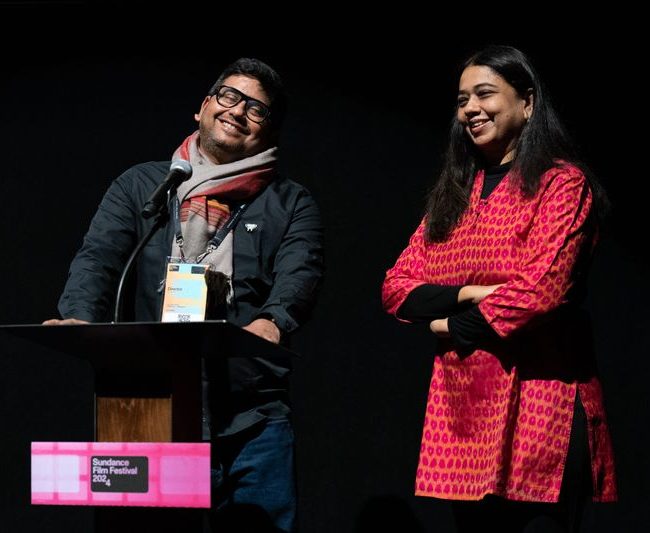
(Check out Kaitlyn Hardy’s Nocturnes movie review! The film opens in Los Angeles on October 25th at the Laemmle Royal. Seen it? Join the conversation with HtN on our Letterboxd Page.)
I never thought one of the most beautiful films I’d ever watched would be about moths.
To be honest, I never really thought much about them, and on the rare occasion I did, my mind usually went to disgust. Within the first shot of Nocturnes, with halos of moths illuminated in the blue light of scientist Mansi Mungee’s research set up, my mind was changed.
It’s shocking to learn filmmakers Anirban Dutta and Anupama Srinivasan went into this film without much knowledge, let alone care, for moths. They capture these organisms with such wonder and delicacy, you would have thought they’d dedicated their lives to learning about them prior to the 2-3 years they spent filming the documentary.
But then again, it also makes sense. Rather than capturing their scenes with a sense of familiarity, the camera relays their awe. From the intimate close-up shots of the moths, walking along the canvas Mungee set up to observe them, to the sweeping shots of the sublime Himalayan landscape, with the mist creeping up the hills almost like an organism in and of itself, there’s a pervasive sense of childlike wonder present at the heart of this film.
Although Dutta and Srinivasan act as our guides into this environment, they give us the liberty to explore as individuals. We notice elements of the environment that catch our eye rather than being shown what we “should” focus on. We are given the space and time to use our eyes and ears as tools of discovery. And although we are operating through a screen, the sheer viscerality of the film – especially in its use of sound, which is simultaneously grand and delicate– scratches an itch we forgot we may have longed for.
Dutta and Srinivasan believe the global “we” have lost this ability to discover. Our eyes have been trained to value devices, and our ears’ talents have been drowned out by overstimulation and noise pollution. The film is a call to revisit ourselves as children, playing with worms in the dirt or making trumpets out of grass threads; spending hours with our imagination rather than being shown, told, and forced to consume multiple different forms of media all at once – listening to a podcast while we watch a show on our computers while our eyes are glued to the device in our hands, scrolling endlessly.
While the value of the environment is poignant throughout the entire film, a direct conversation of climate change is saved until the end. Mungee’s goal for her project was discovering whether the sizes and breeds of moths are native to different temperatures, and when these temperatures rise – as they already have been – where will the moths in the coldest temperatures go once they’ve reached the top of the mountains, and how will this movement impact the diverse food chain present in the Himalayas? While going up the line of the mountain range’s food chain audiences can imagine that at the top of the food chain – the looming being she doesn’t mention – is man. The area in which Mungee was studying is largely inhabited by the indigenous Bugun community – those who are likely the least responsible for climate change, but whose home will be impacted the most.
The entire film decentralizes humans in the climate conversion, focusing instead on the organisms’ whose existence we’ve neglected, and thus endangered.
Nocturnes’ confounding combination of concern and tranquility sprouts surprising feelings of hope – and in the wake of this hope, motivation. The world may be ending, but Nocturnes provides one more beautiful reason why our efforts matter. Insignificant as we may think moths to be, their longevity reflects ours.
Sandbox Films; Anirban Dutta and Anupama Srinivasan; Nocturnes documentary
– Kaitlyn Hardy












Kaveh
Amazing